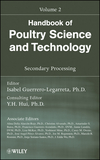Crystalline material, thin blue rubber, glass, hard white plastic, flexible rubber material, and small rocks. All of these items were found in meat or poultry products between May 2020 and May 2021, causing six recalls. All total, 1,195,732 pounds of products were recalled – products that would have been perfectly fine to eat had the contaminants been detected earlier and the adulterated products destroyed.
Processors have undertaken extensive measures to eliminate pathogens such as E. coli and Listeria from their products. As a result of the industry’s work, there were just 31 total meat and poultry recalls in 2020, as noted by The National Provisioner columnist Shawn Stevens. Just one involved a recall due to E. coli.
However, as the progress on pathogen reduction has resulted in a safer food supply, there continue to be incidents of foreign matter contamination. Each recall due to a piece of metal, a sliver of rubber, or rocks and glass, demonstrates the need for metal detection or X-ray equipment. Catching contaminants before they result in consumer complaints saves money and keeps products from being yanked from store shelves.
Verde Farms, a Woburn, Mass., manufacturer of grass-fed beef products, passes its finished products through a metal detection system prior to shipping. That is actually the second time the product is scanned for product contamination, says Claudio Andrade, Director of Quality Assurance.
“In addition to a robust Supplier Assurance Program, Verde also applies X-ray inspection to incoming beef at the beginning of the grinding line to prevent any out-of-spec material such as metal or other foreign objects from ever entering the production process,” he says. “We’re proud to hold a 93 SQF (Safe Quality Food) plant certification score, an important requirement of which includes technologies to remove or detect foreign matter.”
Like most of the equipment found on a meat processing plant floor, the product inspection equipment has to be versatile as well as robust. Andrade notes that Verde’s X-ray inspection equipment also performs in-line fat analysis and chemical lean measurements in real-time – “key data to ensure that our finished products meet both specifications and superior quality expectations,” he adds. “We’re able to offer this best-in-class technology as a vertically integrated service for customers interested in having their own product deboxed at our facility.”
Recalls due to foreign matter contamination between May 1, 2020 and May 1, 2021
| Date | Foreign Matter | Amount |
|---|---|---|
| May 22, 2020 | Small rocks | 276,872 lbs |
| June 28, 2020 | Flexible rubber material | 59,800 lbs |
| December 19, 2020 | White hard plastic | 92,206 lbs |
| January 15, 2021 | Glass/hard plastic | 762,615 lbs |
| January 21, 2021 | Thin blue rubber | 4,200 lbs |
| April 2, 2021 | Crystalline material | 39 lbs |
The data that Verde gathers does more than prevent contaminated products from leaving the facility.
“Internally, our X-ray images can be stored for further screening and/or training purposes. We also apply this data externally to evaluate our farm suppliers’ performance and enhance the trust and relationship between parties,” Andrade says.
To ensure the best results, Verde team members calibrate all the inspection equipment at the beginning of each shift or at every changeover.
“Parameters like sensor sensitivity and the rejection system are also tested periodically during the shift to ensure the equipment is working efficiently,” Andrade adds. “We also put the equipment through annual manufacturing service for any necessary adjustments, component upgrades, and additional sensitivity calibration using NIST-traceable standards for superior quality assurance.”










